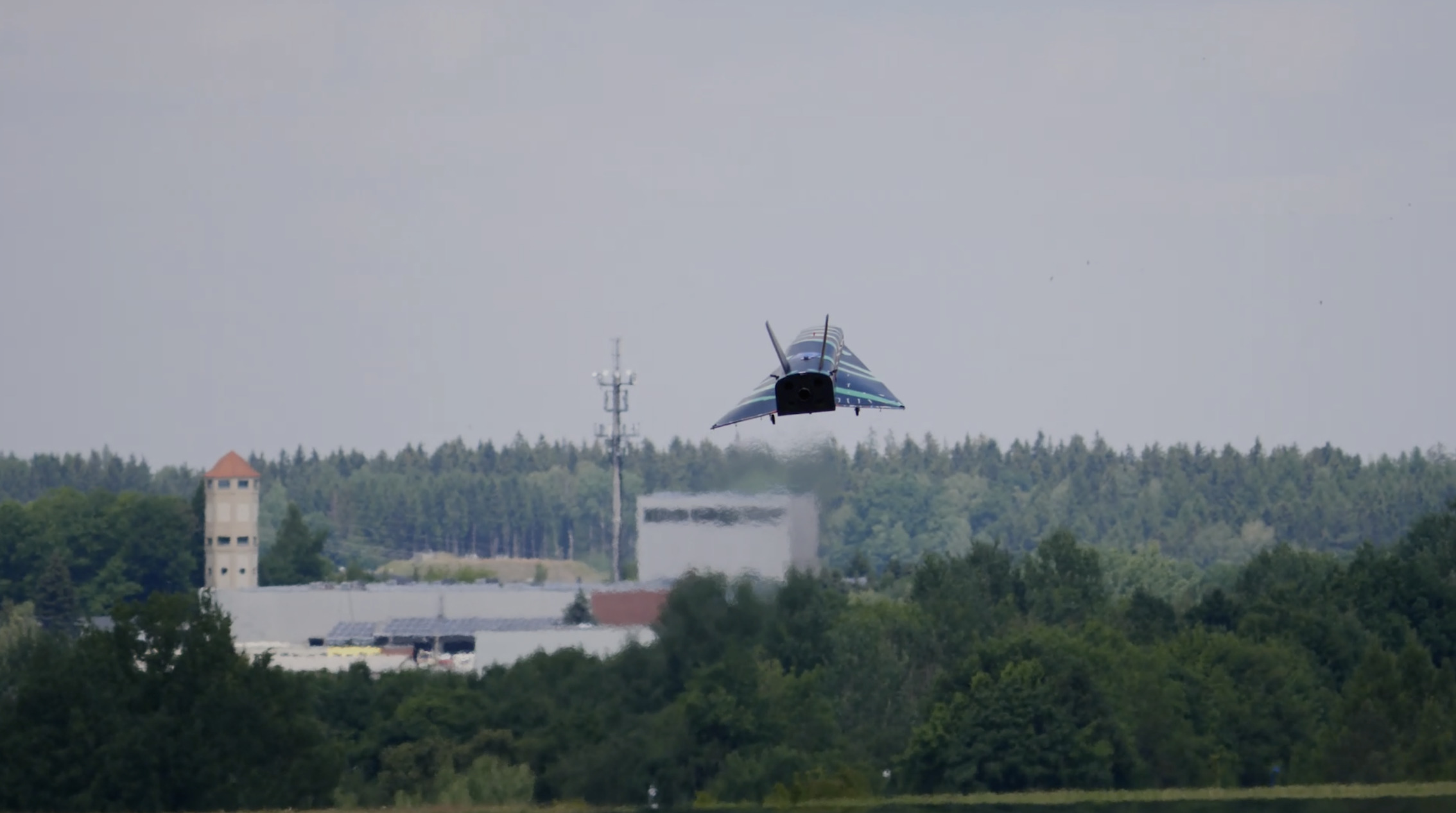

World’s First Hydrogen-Powered Afterburners Will Propel Hypersonic Drone to New Heights
Prepare for a transportation revolution like never before with hydrogen emerging as the game-changer capable of transforming multiple modes of travel, including the exhilarating realm of hypersonic aviation. With its unrivalled potential as a clean renewable energy source, hydrogen is poised to revolutionise the way we traverse the skies.
Imagine embarking on thrilling journeys at unimaginable speeds, propelled by hydrogen-powered engines that emit nothing but water vapour. As we embrace this technological leap, the era of hydrogen-powered hypersonic flight promises a future where speed, sustainability, and excitement converge in breath-taking harmony.
Science-fiction? Not so. In a remarkable feat, Swiss aerospace start-up Destinus have taken a significant stride forward with their recent test flight of a hydrogen-powered prototype drone.
“The successful flight with hydrogen afterburners demonstrates the potential for high-performance propulsion systems that are highly efficient and reduce carbon emissions,” said Destinus CEO Mikhail Kokorich, following the event.
The unmanned Jungfrau prototype executed a successful take-off last Wednesday from an airport near Munich, Germany. With the hydrogen-powered afterburners fully engaged, it underwent multiple flights, attaining speeds of approximately 155 mph. Although this falls considerably short of the hypersonic flight threshold of 3,000 mph, the experiments provided compelling evidence of the hydrogen afterburners’ practicality and effectiveness under real-world conditions.

Pictured: The unmanned Jungfrau prototype executed a successful take-off last Wednesday from an airport near Munich, Germany. With the hydrogen-powered afterburners fully engaged, it underwent multiple flights, attaining speeds of approximately 155 mph.
Destinus developed the afterburner internally, using additive manufacturing techniques, and conducted rigorous ground testing at their propulsion test site located in Payerne, Switzerland.
_____________________
Related Content:
Airport Infrastructure for Hydrogen and Electric needs urgent development
______________________
Traditionally, afterburners enhance the thrust of a turbojet engine by introducing extra fuel — hydrogen, in this instance — into the exhaust stream of the turbine. The augmented thrust produced by afterburners empowers aircraft to attain elevated speeds and climb rates, making them a common feature in fighter jets striving to achieve supersonic velocities.
Sure enough Destinus emphasised the resemblance of their hydrogen afterburner’s design to that of a ramjet’s combustion chamber. And it’s a liquid hydrogen-fuelled ramjet that the company ultimately envisions propelling their aircraft to hypersonic speeds.
Established in 2021, Destinus has an ambitious plan to engineer a pair of hydrogen-powered passenger aircraft that can fly at hypersonic speed. The initial aircraft, slated for deployment by the close of this decade, is designed to accommodate 20 to 100 passengers, and make journeys of up to 7,500km (4,700 miles).
The company has successfully constructed two unmanned subscale prototypes, namely Jungfrau (Destinus-1) and Eiger (Destinus-2). These prototypes serve as perfect testing platforms for evaluating and refining designs and systems intended for hypersonic aircraft.

Pictured Eiger (Destinus-2): one of Destinus’ two unmanned subscale prototype aircraft.
Destinus is a collective of aerospace specialists hailing from five European nations, with operational bases in Switzerland, Spain, Germany, and France. However, despite their commendable progress with the afterburners, the company has decided not to immediately transition to a larger prototype jet. Instead, they are adopting a gradual approach, prioritising incremental steps to ensure a methodical and thorough development process.
Next year’s test will see “the world’s first supersonic drone powered by hydrogen,” said Kokorich.
The objective sounds simple: to manufacture an aircraft capable of swiftly transporting people and cargo across the globe within a few hours. The results could be revolutionary. According to Destinus’ projections, hypersonic flights from Memphis to Tokyo would be accomplished in a mere three hours and 15 minutes, while travel time from Memphis to Frankfurt would be reduced by as much as an hour.
Destinus engineers are currently focused on the development of the company’s third prototype, Destinus-3, set to become the world’s inaugural supersonic hydrogen aircraft. With great anticipation, Destinus intends to unveil Destinus-3 at the upcoming Paris Airshow later this month, followed by the inaugural flight scheduled for 2024, marking a significant milestone in the pursuit of advanced aviation technology.

Destinus is a collective of aerospace specialists (pictured) hailing from five European nations, with operational bases in Switzerland, Spain, Germany, and France. Established in 2021, the company has an ambitious plan to engineer a pair of hydrogen-powered passenger aircraft that can fly at hypersonic speed.
Decarbonising aviation has become an imperative in the fight against climate change, as it is a significant contributor to greenhouse gas emissions. In this pursuit, several major players have recognised the potential of hydrogen technology, as it can be produced from renewable sources, and when used as a source of energy it only emits water vapour, making it a clean energy option.
In a similar vein, other companies have ventured into hydrogen-powered aviation. For instance, Universal Hydrogen, a Los Angeles startup, achieved a 15-minute test flight of its hydrogen-fueled aircraft in March 2023.

Pictured: Jungfrau (Destinus-1) has made several successful test flights using hydrogen powered afterburners similar to those used in fighter jets.
Companies such as Airbus, Boeing, and Rolls-Royce are actively investing in the race to advance hydrogen-powered aircraft. Their commitment to exploring hydrogen aviation technology showcases the industry’s determination to achieve carbon-neutral flight and underscores the transformative potential of sustainable aviation for a greener future.
Hydrogen aviation in its many forms is just beginning. It reduces the environmental impact of aviation and opens possibilities for sustainable, zero-emission flights. With ongoing advancements in hydrogen-powered aircraft and infrastructure, the aviation sector has the potential to transition to a greener future, contributing significantly to global efforts to combat climate change.
To learn more about HYCAP, click here.